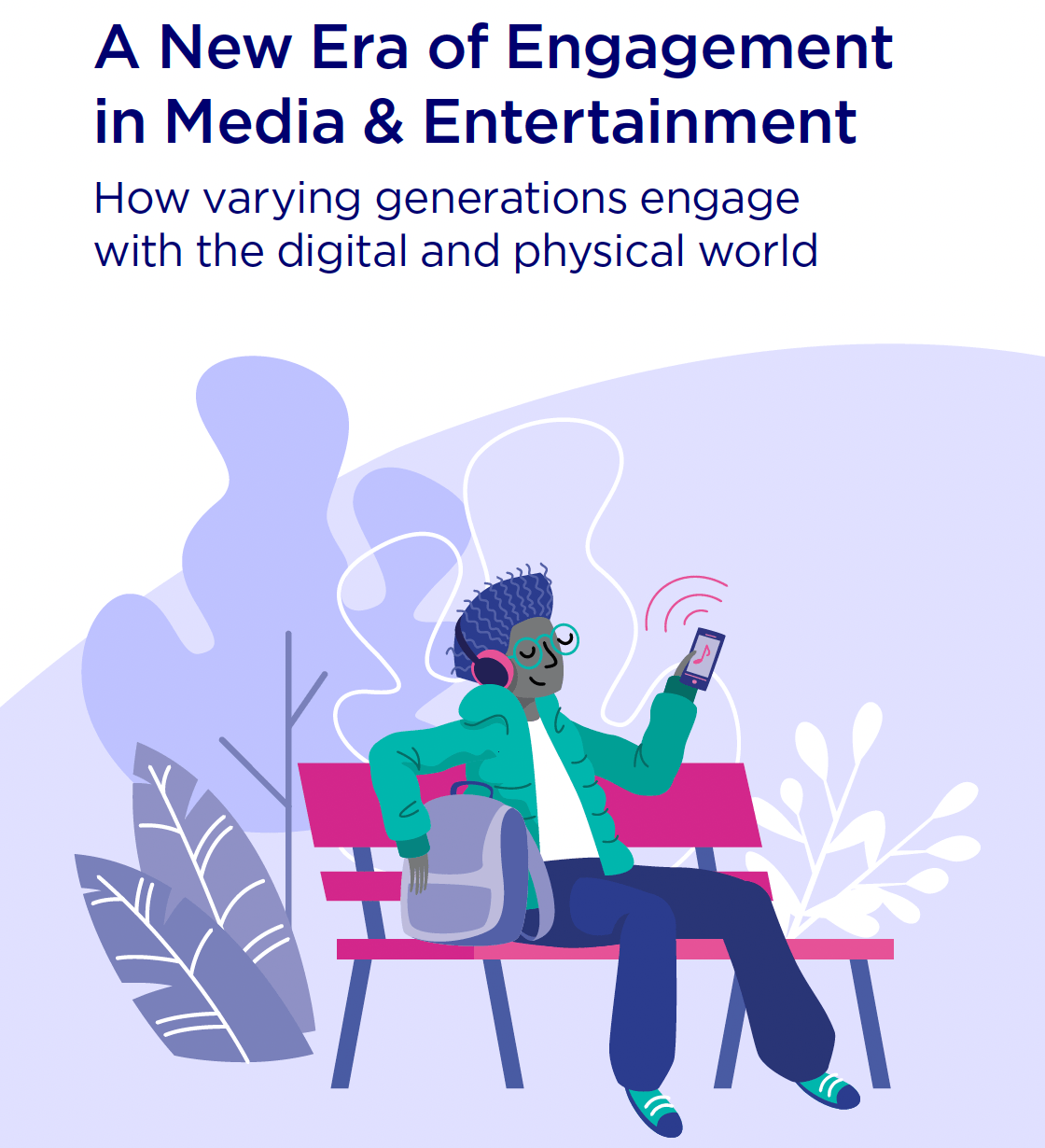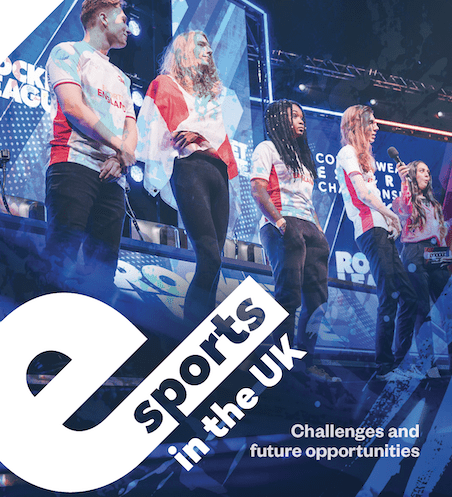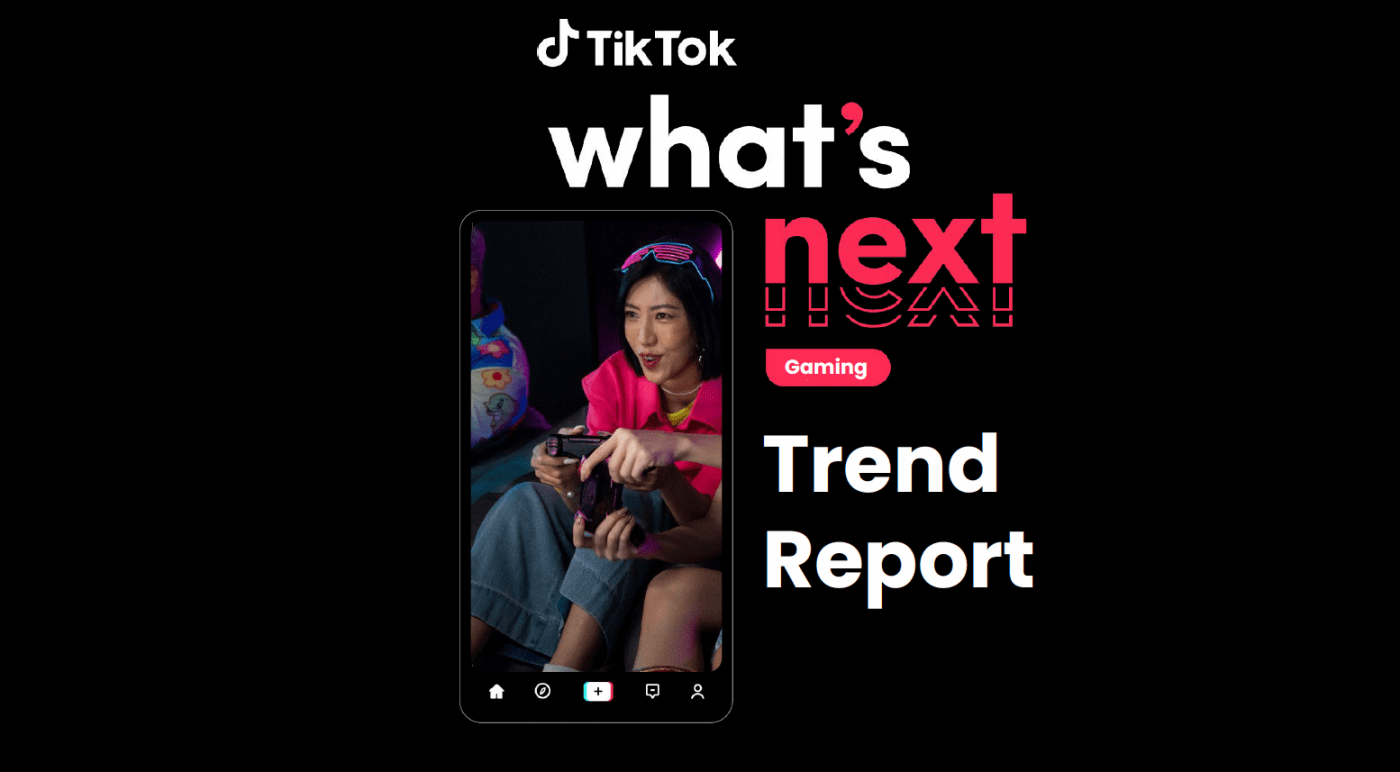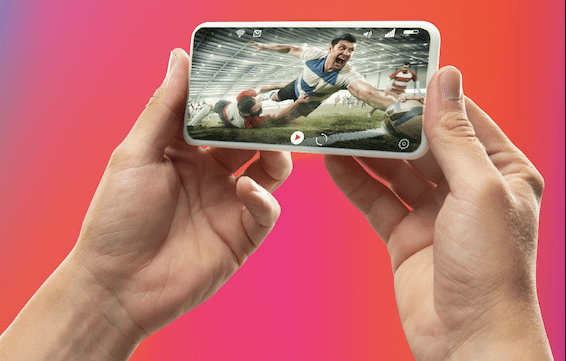What media and entertainment we focus our time on is ever-changing. New generations have fresh views and expectations on how they spend and value their time. The physical and digital worlds are blending, fueled by innovations in VR, blockchain, crypto, web3, and NFTs. Consumer behaviour is shifting, especially after the pandemic, and gaming is occupying more of each new generation’s time as it becomes richer in experience and more accessible. Click here to download the ‘How do people engage with the digital and physical worlds’ report‘.
Media and entertainment: gaming is of growing importance
Gamers spend as much or as little time or money as they wish and decide whether their experience is passive, active, or a mix of both. You could consider this the foundation of “the metaverse” as games are now a destination for all types of engagement including creating, socialising, viewing, and playing.
This not only impacts game companies, which continue to expand their horizons to include other forms of entertainment but also consumer brands and the traditional media value chain that relies largely on advertising. Younger generations now want to actively engage with content and IP through creation, play, and simultaneous socialising. Fandom can no longer be built with passive experiences alone. In this new era of media and entertainment, Newzoo’s report on how varying generations engage with the digital and physical world is an important read.
Younger Generations Play in Both Physical and Digital Spaces
More time spent gaming doesn’t mean that younger generations are more averse to physical sports. In fact, almost 70% of Gen Z do both compared to less than half of Gen X. Much of this report centres around Gen Z in comparison to Millennials and Gen X. Examining behaviours and preferences across these generations, we can see that younger people are spending more time blending digital and physical activities and pursuing more active forms of engagement.
The future of media and entertainment is about:
- People engaging with all forms of entertainment in a single environment
- A generational shift to more active forms of engagement
- Increasing convergence of activities in the digital and physical world
Key media and entertainment takeouts
-
Mobile has become the dominant platform for accessing media and IP, averaging 4.3hrs of engagement a day versus 3hrs for PC/TV/other
-
Nearly 12 hours per week are spent on video games and in virtual worlds
-
People prefer mobile for media engagement (unless we’re talking TV)
-
Game content is popular across non-gaming media platforms e.g. TikTok, Spotify, Netflix etc
-
Gen Z spends more time engaging with games and virtual worlds than watching TV
- Games are a platform for entertainment e.g. Fortnite has hosted numerous music concerts, movie viewings, fashion shows, and sports events
-
Games attract players and audiences alike. Spectatorship is a feature
-
Active engagement (i.e. reading/creating/playing) is becoming more popular with every new generation
-
Consumers spend nearly 15 hours per week engaging in games
-
Younger consumers spend more time on games than previous generations
-
Video games command the most active engagement hours (versus sports, music, films, and reading)
- Sports and fitness represent the most social ways to engage with media (i.e. people want to share the experience with others)
-
Music has the highest share and number of true fans
-
Video game IP resonates across generations and especially with Gen Z
-
Integrating entertainment IP into video games e.g. Ted Lasso, the fictional football coach, and his team AFC Richmond are playable in EA’s FIFA23, which marks a significant merger between AppleTV+ IP and the video game world
- Entertainment IP can transcend single forms of media e.f. Cyberpunk is a game that also has an animated TV series, its music can be found on Spotify, and it also has books/comic strips
-
People spend more leisure time engaging with digital interfaces than on “real world” activities
- When it comes to digital leisure time activities, most engagement hours are spent passively watching content, including videos and on-demand TV
-
When it comes to physical or real-world leisure time activities, every generation spends the most time socialising with their family or friends
-
People engage in digital vs. physical activities in different ways i.e. viewing is by far the most popular way to engage in digital leisure time activities, whereas socialising is the most popular way to engage in physical activities
- Different generations don’t create digital content equally. 69% of Gen Z create 6.9hrs of content a week, versus 46% of Gen X who create 5.9 hours a week
-
Brand partnerships can cross the boundaries of digital and physical, driving business in new ways while delighting and engaging customers e.g. Ballantine’s collaborated with Gearbox Entertainment’s game, Borderlands. Players can now get their hands on a limited edition Scotch whisky evoking the popular NPC character Mad Moxxi. Every bottle of this co-branded elixir comes with unlockable content for Borderlands 3.
-
The metaverse offers richer engagement possibilities for all types of consumers i.e. traditional media mostly focuses on passive engagement while social media adds a socialising layer and facilitates creation. Game environments add even more possibilities by bringing active play into the mix
Click here to download the full ‘How do people engage with the digital and physical worlds’ report‘.
If you’re looking for advice from a gaming and esports agency, Strive Sponsorship can help. Contact us for sponsorship, marketing, commercial, content, media, investment, and communications consultancy services.
Frequently asked questions
What is the role of media in entertainment?
Media plays a significant role in entertainment as it is responsible for creating, producing, and distributing a wide range of content to audiences worldwide. From movies, TV shows, music, and books to video games and online content, the media provides a platform for entertainment.
What are 5 examples of media entertainment?
- Television Shows – Popular TV shows like Game of Thrones and Stranger Things are great examples of media entertainment.
- Movies/films – From blockbuster action movies to romantic comedies, movies are a popular form of media entertainment.
- Music – The music industry is a major player in the world of media entertainment. From pop stars like Taylor Swift and Justin Bieber to legendary musicians like the Beatles and Michael Jackson, music has the power to entertain and captivate audiences worldwide.
- Video Games – The video game industry has grown rapidly in recent years, with popular titles like Fortnite, Minecraft, Grand Theft Auto, and Call of Duty providing hours of entertainment for gamers.
- Social Media – Social media platforms like TikTok, Instagram, and YouTube have become an important source of media entertainment for many people. From viral videos and memes to influencer content, social media offers a wide range of entertaining content for users to engage with.
What is an example of a media and entertainment company?
The Walt Disney Company is one of the most famous. It is known for its iconic characters like Mickey Mouse, its animated films, its theme parks, and its media networks. The company operates numerous television networks, including ABC, ESPN, and Disney Channel, and also produces films through Walt Disney Pictures, Pixar Animation Studios, Marvel Studios, and Lucasfilm.














